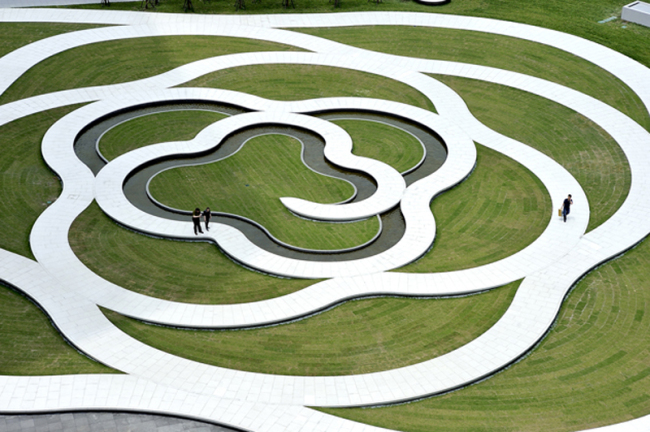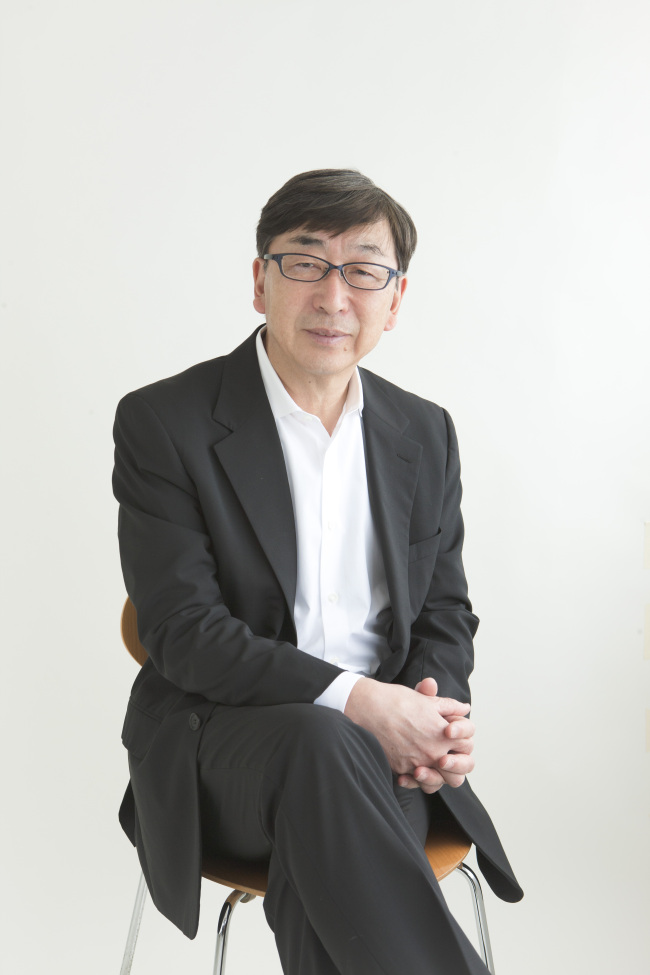Modern architecture has created the same gray skyline in metropolitan cities, losing the link with the nature that surrounds them. Inviting nature back into the city can offer the sense of comfort that nature provides and give a unique character to cities, according to Toyo Ito, winner of the Pritzker Architecture Prize in 2013.
“Modernism and the technologies architects apply to their buildings make them look alike. Imagine a man living in a modernized building and surrounded by furniture and artwork, is he really happy?” said Ito in his keynote speech at a conference for architecture scholars from around the world, Monday. The ACSA/AIK International Conference, held from June 21-23 at Ewha Womans University in Seoul, brought architects and architecture educators from around the world to talk about post-industrial cities.
 |
| Taipei World Trade Center Square. (Toyo Ito&Associates, Architects) |
Ito, an advocate for organic design that harmonizes buildings and nature, is well-known for including the natural landscape when designing functional, energy-saving buildings.
The Taipei World Trade Center Square, which was completed in 2011, features open greenery and geometric curves that serve as walking paths for citizens. The space accommodates an underground parking garage and connects to a cultural complex.
In his other project in Japan, Ito makes a separate natural space that resembles the city’s original riverside. For his Gifu Media Cosmos project, which construction started on in 2011, he made a small creek and a 30-square-meter promenade lined with trees.
“My intention was to provide lots of green because the building is not surrounded by anything green,” he said.
 |
| Architect Toyo Ito by Yoshiaki Tsutsui |
The cultural center is eco-friendly in light of design. It recycles 50 percent of the energy it consumes and uses natural energy and materials to “co-exist with nature.” The underground water flows into the small creek. Also, the building collects rain water and recycles it to conserve energy. The curved roof helps funnel sunlight inside, providing natural lighting to those who study and read on the upper floor during daylight hours.
The Market Street Office Tower, under construction in a business district in Singapore, is one of his latest projects that seeks to bring nature to the center of the city. Half of the 40-story building’s exterior will be designed green. Each story will have greenery to keep office workers surrounded by nature. On the roof a lush garden will be set up, which will send fresh and clean air to the inside of the building.
Ito said that the temperature goes down by 1 degree Celsius every 100 meters from the ground and that the cooler air on the roof will help the building use less air-conditioning.
“This is to give green space back to the city ― from the ground floor to the roof. It will become a new symbol of the 21st century architecture in metropolises,” he said.
By Lee Woo-young (wylee@heraldcorp.com)

